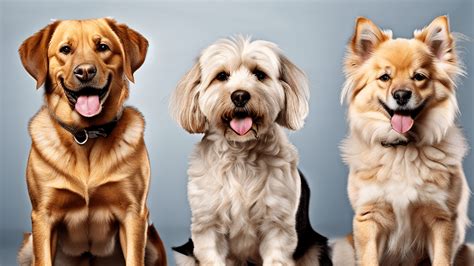Proper grooming is essential to keep your dog looking good, feeling comfortable, and staying healthy. But not all coats are the same—each dog’s fur type requires different tools, techniques, and schedules. Whether your dog has a short, curly, double, or silky coat, this guide will help you understand how to care for it properly.
Why Grooming Matters
Regular grooming isn’t just about appearance. It helps:
- Prevent matting and tangling
- Reduce shedding and allergens in your home
- Promote healthy skin and coat
- Detect early signs of parasites, lumps, or injuries
- Strengthen the bond between you and your dog
Identifying Your Dog’s Coat Type
Before diving into grooming routines, determine which of these common coat types your dog has:
1. Short Coat
Breeds: Beagle, Boxer, Doberman
- Texture: Smooth, close to the body
- Shedding: Moderate to high
- Grooming tools: Rubber curry brush, bristle brush
Tips:
- Brush once a week to remove loose hair.
- Use a damp cloth to add shine and remove debris.
- Bathe every 4–6 weeks or when dirty.
2. Long Coat
Breeds: Shih Tzu, Afghan Hound, Lhasa Apso
- Texture: Flowing, often prone to tangles
- Shedding: Low to moderate
- Grooming tools: Slicker brush, metal comb
Tips:
- Brush daily to prevent mats.
- Use detangling spray before brushing.
- Trim hair around the eyes, feet, and sanitary areas regularly.
3. Double Coat
Breeds: German Shepherd, Husky, Golden Retriever
- Texture: Dense undercoat + outer guard hairs
- Shedding: Heavy (especially during shedding season)
- Grooming tools: Undercoat rake, slicker brush, deshedding tool
Tips:
- Brush 2–3 times a week (daily during shedding season).
- Never shave a double-coated dog—it can damage hair growth.
- Use a blow dryer (on cool) to remove loose undercoat after bathing.
4. Curly or Wavy Coat
Breeds: Poodle, Bichon Frise, Portuguese Water Dog
- Texture: Tight curls or soft waves
- Shedding: Low
- Grooming tools: Comb, slicker brush, clippers for trimming
Tips:
- Brush every other day to prevent mats.
- Schedule professional grooming every 4–6 weeks.
- Always detangle before bathing—water tightens knots.
5. Wire Coat
Breeds: Airedale Terrier, Schnauzer, Scottish Terrier
- Texture: Harsh, bristly
- Shedding: Minimal
- Grooming tools: Slicker brush, stripping knife, scissors
Tips:
- Hand-stripping may be required to maintain coat texture.
- Brush 2–3 times per week.
- Bathe monthly with a texture-preserving shampoo.
6. Silky Coat
Breeds: Cocker Spaniel, Yorkshire Terrier, Maltese
- Texture: Fine, straight, and smooth
- Shedding: Moderate
- Grooming tools: Pin brush, comb
Tips:
- Brush daily to maintain silkiness and prevent tangles.
- Use a leave-in conditioner to reduce static.
- Trim regularly to avoid split ends.
Bathing Tips for All Coat Types
- Use dog-specific shampoo suited to coat type or skin condition.
- Rinse thoroughly to prevent residue buildup.
- Use lukewarm water.
- Dry gently with a towel or blow dryer on low/cool setting.
Caution: Never use human shampoo—it can upset the pH balance of your dog’s skin.
Nail, Ear, and Dental Care
Regardless of coat type, include the following in your grooming routine:
- Nail trimming: Every 3–4 weeks or as needed
- Ear cleaning: Weekly or biweekly (especially for floppy-eared breeds)
- Teeth brushing: 2–3 times per week to prevent dental issues
Grooming Safety Tips
- Check for signs of irritation, lumps, or fleas as you groom.
- Be gentle around sensitive areas: ears, eyes, tail, and paws.
- Use treats and praise to keep the experience positive.
- Start young—puppies acclimate to grooming faster with early exposure.
Professional Grooming: When and Why
While home grooming is essential, some dogs benefit from regular professional care:
- Dogs with dense or curly coats that require clipping
- Breeds prone to matting
- Owners with limited time or physical ability
Look for certified groomers who use gentle handling and clean facilities.
Final Thoughts: Tailored Care for Every Coat
Each dog is unique—and so is their grooming routine. By understanding your dog’s coat type and adjusting your grooming approach accordingly, you can keep their skin and fur healthy, avoid discomfort, and create a regular bonding experience. Grooming isn’t just a chore—it’s an act of love that keeps your best friend feeling their best.
